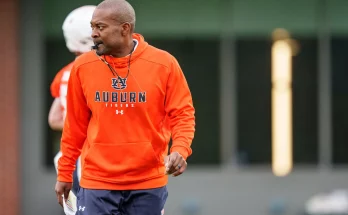This Image Captures Todd Heap, the Beloved Ravens Tight End Whose Toughness, Talent, and Heart Made Him a Baltimore Legend Forever
When you see Todd Heap in a Ravens uniform, a wave of memories returns instantly for fans who lived through the franchise’s formative years. This image doesn’t just show a former tight end—it shows one of the most consistent, respected, and quietly dominant players ever to wear the purple and black. For over a decade, Todd Heap embodied everything the Baltimore Ravens stood for: toughness, professionalism, humility, and unwavering loyalty to the game and the city he called home.
Heap wasn’t the loudest voice in the room. He wasn’t the flashiest star on the field. But make no mistake—he was one of the most reliable and impactful. On Sundays, when the offense needed a big catch, a third-down conversion, or a red zone mismatch, number 86 was the guy. And for over ten years, he delivered again and again.
Drafted in the first round of the 2001 NFL Draft out of Arizona State, Heap entered a Ravens organization that was fresh off a Super Bowl XXXV victory. The defense was already legendary, but offensively, the team was still searching for a long-term identity. Heap became one of the first true offensive building blocks for the future. He was brought in to be a difference-maker—and that’s exactly what he became.
Early in his career, Heap had the unenviable task of replacing Shannon Sharpe, a Hall of Famer and one of the best to ever play the tight end position. But instead of shrinking under that pressure, Heap embraced it. He didn’t try to be Shannon Sharpe—he became his own player. One built on precision, intelligence, route-running excellence, and quiet toughness. And while the Ravens cycled through quarterbacks during his time—from Elvis Grbac and Kyle Boller to Steve McNair and Joe Flacco—Heap remained the constant. He was the safety blanket, the security valve, and often the top receiving option, even when defenses keyed in on him.
What made Todd Heap so special wasn’t just his stats, although those were impressive on their own. Over his 10 seasons in Baltimore, Heap totaled 467 receptions, 5,492 yards, and 41 touchdowns—numbers that made him the franchise’s all-time leader in multiple categories at the time of his departure. But more than that, it was the way he played the game.
Heap wasn’t just a pass-catcher. He was a willing blocker, a team-first player, and a competitor who would play through pain, weather, and defensive double-teams without complaint. He absorbed big hits across the middle. He took on linebackers in the run game. And he always put the team ahead of personal accolades. That’s why fans respected him. That’s why teammates loved him. And that’s why opponents prepared for him.
If you watched a Ravens game in the early 2000s, you quickly understood that Heap was the heart of the offense. Defensive coordinators often schemed specifically to limit his impact. But even when the passing game struggled or the offensive line faltered, Heap found a way to contribute. His ability to find soft spots in zone coverage, his timing with quarterbacks, and his dependable hands made him a nightmare to cover.
And it wasn’t just the stats—it was the clutch moments. Heap was a gamer. When the Ravens needed a spark, Heap was often the one to provide it. A diving catch on third-and-long. A seam route touchdown that electrified M&T Bank Stadium. A chip block on the edge to spring a running back. His contributions came in all forms, many of them subtle, but all of them critical.
Beyond the field, Heap became deeply woven into the culture of the Ravens organization and the community of Baltimore. He never sought the spotlight, but it always seemed to find him because of his consistency and professionalism. He was a team captain, a locker room leader, and someone younger players looked up to. His demeanor reflected a work ethic that mirrored the city’s own blue-collar identity. Heap didn’t talk much—but he showed up. And he produced.
In many ways, Heap helped bridge eras in Ravens history. He arrived in the early days, when the defense reigned supreme, and stayed long enough to mentor players who would carry the torch into a more balanced, offense-capable future. His presence helped shape the franchise’s expectations for what a Raven should be—tough, loyal, smart, and committed to the grind.
One of the most memorable aspects of Heap’s time in Baltimore was the way fans rallied around him. Even when the offense struggled, even when injuries piled up, and even when wins were hard to come by, Heap was always met with appreciation and respect from the fanbase. He didn’t need to do dances in the end zone or talk trash in interviews. He earned his respect by showing up every day, putting in the work, and playing with heart.
There was also a grace about how he handled adversity. Heap battled through multiple injuries throughout his career, including a number of painful hits that would’ve sidelined many players longer. But he kept coming back. His toughness wasn’t loud—but it was absolute. And through it all, he never pointed fingers. Never made excuses. Never let his frustration become bigger than his team.
In 2011, after ten seasons with the Ravens, Heap was released in a salary cap move that shocked many in the organization and among fans. He would go on to finish his career with the Arizona Cardinals, his home-state team. But even as he suited up in red, he was always a Raven in the hearts of Baltimore fans. He returned to Baltimore several times, always greeted with thunderous applause and admiration. His name still resonates through M&T Bank Stadium, and his impact on the franchise is permanent.
And while his playing days have ended, his legacy continues. Heap has remained involved in football and charitable work, and perhaps most poignantly, in family. The tragic loss of his young daughter Holly in 2017 brought an outpouring of love from the NFL community, especially from Baltimore. In her honor, Heap and his family created the Hugs From Holly initiative, encouraging people to perform acts of kindness in her memory. It was a heartbreaking moment that once again revealed the strength and grace of Todd Heap—not as a football player, but as a father and a man.
It’s that full story—the toughness on the field, the humility off it, the loyalty to his team, and the depth of character—that makes Todd Heap more than just a former tight end. He’s a symbol of a time when the Ravens were building their identity. He helped shape that identity. He helped define what a Baltimore Raven should be.
When fans look at images of Heap, like the one in question, it brings back more than memories. It brings back feelings—of pride, of loyalty, of Sundays spent watching a player who gave everything he had for the name on the front of the jersey. And it reminds people that greatness doesn’t always come with fireworks. Sometimes it comes in the form of quiet consistency, relentless effort, and an unwavering commitment to the team.
Todd Heap may never be as loud or celebrated nationally as some of the NFL’s flashier stars. But in Baltimore, he’s football royalty. A Ring of Honor member. A franchise icon. And forever one of the most respected and beloved Ravens to ever take the field.
So when you look at the image of Todd Heap in uniform—helmet on, eyes locked, ready to run his route—you’re not just seeing a tight end. You’re seeing a legend. You’re seeing a man who played the game the right way. You’re seeing Baltimore’s own. And that, more than anything, is why his legacy will never fade.



